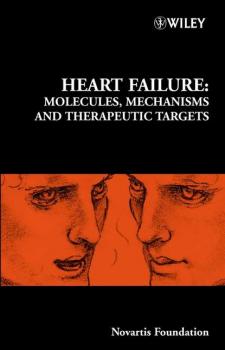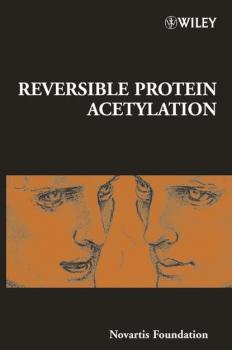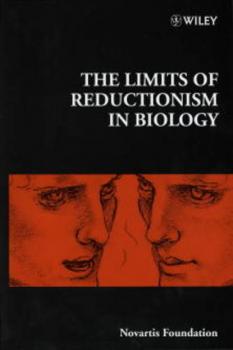Gregory Bock R.
Список книг автора Gregory Bock R.New Treatment Strategies for Dengue and Other Flaviviral Diseases
Dengue virus is a member of the Flaviviridae family, which includes viruses associated with human diseases such as yellow fever, Japanese encephalitis and hepatitis C. Dengue fever is transmitted by mosquitoes, principally Aedes aegypti. There are four serotypes of dengue virus, of which DENV-2 has been the most prevalent in many recent epidemics. Following primary infection, lifelong immunity develops, preventing repeated assault by the same serotype. However, the non-neutralizing antibodies from a previous infection or maternally acquired antibodies are thought to form complexes with a different serotype during a subsequent infection and cause dengue haemorrhagic fever/dengue shock syndrome, which can be fatal. There is no treatment or vaccine available today that can combat this emerging and uncontrolled disease. This book features contributions from the world’s leading researchers working on dengue and related flaviviruses who examine the current state of the art in the molecular biology of the dengue virus. Particular emphasis is placed on the structure and function of the virus and the targeting of virus proteins by potential antiviral agents. The pathogenesis of dengue and dengue haemorrhagic fever are discussed in detail, especially the target cells and the specific receptors on these cells, thereby developing a clear overview of host and viral factors that contribute to dengue haemorrhagic fever. Finally, the book reviews the therapeutic options, paying particular attention to ways in which vector, host and environment can play a critical role in the spread of this disease. With dengue fever and other emerging viral diseases becoming increasingly prevalent around the world, this book provides valuable insight into the virus that causes this disease and potential ways to manage it. It is essential reading for all those working in tropical diseases, public health and virology. Praise from the reviews: «The book provides an excellent summary of dengue/flavivirus research and is important for individuals and institutions interested in emerging infectious diseases.» MICROBIOLOGY TODAY
Anaphylaxis
Anaphylaxis is an immediate-type allergic reaction involving the whole organism. It is the most life-threatening allergic condition. Although there are few exact epidemiological data regarding prevalence, estimates regarding insect sting anaphylaxis range from 1-3% in the general population, but much higher values have been reported by some authors for food and drug-induced anaphylaxis. Anaphylaxis is the main acute killer of allergic individuals. Although anaphylaxis was discovered at the beginning of the 20th century, there are still many unresolved issues. These include non-IgE-mediated anaphylactoid reactions, non-immunologically mediated anaphylactoid (pseudo-allergic) reactions, pathophysiological events at the microcirculatory level, appropriate therapy for the acute reaction, strategies for prevention, public education about the problem and new approaches to prevention and therapy at the IgE level. All these subjects are discussed in this book. Since anaphylaxis occurs acutely and is unforeseen, it is very difficult to organize controlled studies regarding therapy and prevention. The spectrum of symptomatology covers many clinical areas (skin, respiratory, cardiovascular and gastrointestinal system), therefore inter-disciplinary approaches are necessary for progress in the field. There is widespread uncertainty among physicians about therapy, especially concerning self-administered treatment. In this important book, an multidisciplinary group of experts explore the pathophysiology of different types of anaphylactic and anaphylactoid reactions. Evidence is presented on the epidemiology of these conditions while problems relating to diagnosis, therapy and prevention are examined in detail. This thorough and up-to-date coverage of the subject will be of great interest to all clinical immunologists, researchers and physicians who deal with this life-threatening condition. Related Novartis Foundation symposia: 252 Generation and effector functions of regulatory lymphocytes Chair: Jean-François Bach Immunoinformatics: bioinformatic strategies for better understanding of immune function Chair: Hans-Georg Rammensee Cancer and inflammation Chair: Siamon Gordon
Tinkering
Much recent research in evolutionary developmental biology has focused on the origin of new body plans. However, most evolutionary change at the population and species level consists of tinkering: small-scale alterations in developmental pathways within a single body plan. Such microevolutionary events have been well studied on a population genetic level and from the perspective of adaptive phenotypic evolution, but their developmental mechanisms remain poorly studied. This book explores both theoretical and practical issues of tinkering. It features a wide range of perspectives to address several fundamental questions. How does tinkering occur developmentally, and how is it manifested phenotypically? Are the developmental mechanisms by which tinkering occur different from those that underlie larger evolutionary changes? What are the developmental constraints on tinkering? And how do we test hypotheses about microevolutionary shifts in development from the fossil record? With contributions from experts in a range of fields, this fascinating book makes exciting reading for anyone studying evolution, developmental biology or genetics.
Stem Cells
Understanding stem cells at the molecular level is essential to understanding their behaviour in a physiological context. This volume in our acclaimed Novartis Foundation series features animated discussion from the world’s experts in this topic on the important ethical issues that are raised by research on stem cells. They review the various regulatory regimes, which apply in different countries – a key factor in determining where future stem cell research is carried out. Potential clinical applications covered in the book include the production of cardiomyocytes to replace damaged heart tissue, the production of insulin-producing cells for patients with diabetes, and the generation of neurons for the treatment of patients with Parkinson’s disease or spinal cord injury. Particular attention is paid to the factors that maintain stem cells in a pluripotent state or which drive them to create differentiated and lineage-committed cells in vitro and in vivo. Nuclear reprogramming, the process by which a nucleus acquires developmental potential, is covered here as well. It is relevant to stem cell research generally, and also to research on the cloning of animals by nuclear transfer. This book is an essential purchase for all those engaged in stem cell research, whether in the laboratory, the clinic or the regulatory authorities. From the reviews: «…this book provides: a comprehensive overview of current issues in stem cell research, with contributions from leading figures…» —BRITISH SOCIETY OF CELL BIOLOGY
Heart Failure
Heart failure is the main cause of death and disability in the industrialized world. There is a major need for novel therapeutics for prevention and reversal of cardiac pathology associated with heart failure and cardiac enlargement. Over recent years, dramatic progress has been made in unravelling the cellular circuitry involved in cardiac failure, as well as in normal cardiac growth, development and apoptosis. This work has revealed new and unexpected therapeutic targets in the heart. In addition, advances in understanding the role of stem cells in cardiac physiology have suggested strategies for cardiac repair and regeneration once thought impossible. This book describes the work of leading investigators studying the basic mechanisms of cardiac growth, function and dysfunction. There are also exciting contributions from researchers developing novel therapeutic strategies for cardiac disease. The unique feature is the discussions amongst the contributors, which always return to the same basic problem: how can new data from biological studies be used to design novel therapies for the treatment of cardiac dysfunction following myocardial infarction, hypertension and other disorders? With its strong emphasis on translational research, this book will appeal to both scientists and clinicians interested in diminishing the impact of the current epidemic of cardiac diseases.
Reversible Protein Acetylation
A comprehensive review of recent work on chromatin and non-histone proteins, this book arises from the interactions of a multidisciplinary group of scientists involved in the study of acetylation. This area of research opens up new and exciting possibilities for drug design, and so the final chapters in the book examine some of the potential applications in the treatment of various diseases.
Dietary Supplements and Health
Dietary supplements can contain a wide variety of ingredients, either singly or in combination, including nutrients, botanicals and 'bioactive components' commonly found in foods. They are marketed and used by consumers for a range of reasons: to enhance «well-being», as traditional medicines, for health promotion or disease risk reduction, and as alternatives or complements to conventional drug therapies. On a global basis, the dietary supplement industry has enjoyed rapid growth, becoming a multi-billion dollar enterprise over the last 10 years. This growth has been associated with significant changes in both the types of products available and the reasons for using these products. In many cases, these changes have occurred without the benefit of a sound scientific basis for evaluating the safety and efficacy of these products under the new conditions of use and frequently the same limited scientific evidence is used, even though current product composition, user populations, purported beneficial effects, and conditions of use may differ significantly from the available evidence or historical usage. This book presents systematic examinations of the scientific data that are available and/or needed to substantiate and evaluate the safety and efficacy of dietary supplements. A series of case studies that are illustrative of the types of scientific challenges that have been encountered in substantiating safety and efficacy for various product types are employed to point out some of the successes but also frustrations that have occurred in recent years. Discussions among presenters and participants identify the lessons learned from these experiences and formulate ideas for improved approaches to identifying research needs and for enhancing the quality and relevance of the scientific evidence available for policy decisions. Dietary Supplements and Health constitutes a useful resource for nutritionists, biochemists, public health researchers and anyone interested in herbal, alternative medicines.
The Limits of Reductionism in Biology
A comprehensive volume examining the fundamental questions raised by reductionists' theory about levels of explanation necessary to understand biological systems. The book evaluates the enormously powerful techniques of molecular biology, and analyzes precisely how molecular information has improved our understanding of fundamental biological processes.
Molecular Mechanisms Influencing Aggressive Behaviours
This book features scientists from a broad spectrum of disciplines discussing recent data on aggression in laboratory animals with particular reference to possible implications for understanding human aggression. Chapters focus on the major current experimental issues in the study of aggression in humans and animals. The extensive discussions deal with specific problems of interpretation at the molecular level, as well as general issues relating to our understanding of human and animal aggression.
Tissue Engineering of Cartilage and Bone
Tissue engineering takes advantages of the combined use of cultured living cells and three-dimensional scaffolds to reconstruct adult tissues that are absent or malfunctioning. This book brings together scientists and clinicians working on a variety of approaches for regenerating of damaged or lost cartilage and bone to assess the progress of this dynamic field. In its early days, tissue engineering was driven by material scientists who designed novel bio-resorbable scaffolds on which to seed cells and grow tissues. This ground-breaking work generated high expectations, but there have been significant stumbling blocks holding back the widespread use of these techniques in the clinic. These challenges, and potential ways of overcoming them, are given thorough coverage in the discussions that follow each chapter. The key questions addressed in this book include the following. How good must cartilage repair be for it to be worthwhile? What is the best source of cells for tissue engineering of both bone and cartilage? Which are the most effective cell scaffolds? What are the best preclinical models for these technologies? And when it comes to clinical trials, what sort of outcome measures should be used? With contributions from some of the leading experts in this field, this timely publication will prove essential reading for anyone with an interest in the field of tissue engineering.









